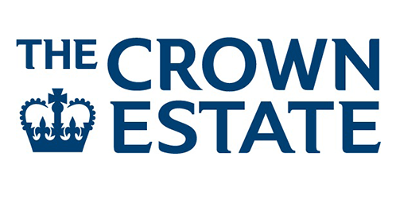The vanishing archaeology of early aviation on the Liverpool Bay coast
01/07/2021 | Andy Sherman
The wide, flat, sandy beaches to the north of Liverpool have a long association with early aviation, just seven years after Orville and Wilbur's famous flight at Kitty Hawk a series of sand airstrips would pop up between the Ribble and the Mersey.1
In the eleven years between the Wright brothers first powered flight and the start of the First World War aerodromes using the foreshore for a runway were constructed at Freshfield, Waterloo Sands and Southport. These early aerodromes mainly consisted of a firm patch of sand and a wooden shed or two to store and repair aircraft .
The earliest aerodrome on Liverpool Bay was built at Freshfield, with Cecil Compton Paterson making the maiden flight from the beach on the 14th May 1910. Paterson would earn his Aviators Certificate later that year and soon started training other would-be pilots to fly.2 Paterson flew in a biplane that he designed and oversaw the construction of, at his company the Liverpool Motor House Company. Just seven months after gaining his Aviator's Certificate Paterson and his pupil Robert Arthur King would make the first successful fligt across Liverpool Bay on the 29th Novemember, 1910. Taking off from Freshfield the pair first landed on the beach at Hoylake, before taking off and landing on the sands before New Brighton to greet the hundreds of well wishers that had turned up to see the aviators, before finally flying back across the bay to land safely at Freshfield.3
Flying from beach airstrips had it's downsides though, as the Liverpool Automobile Club discovered in February 1911.
"Members of the Liverpool Automobile Club realised to their chagrin on Saturday that 'Tide and time wait for no man'. It had been arranged that they should pay a private visit to the Liverpool Aerodrome at Freshfields and witness biplane flights by Mr C Compton Paterson and, possibly Mr Grahame White. The engagement was, however, rendered out of the question by the fact that tide-time clashed with the hour at which the automobiles were due to arrive at Freshfields. The result was that instead of the shore along which the aeroplanes run prior to the ascent being hard and dry, it was the playground of the waves, which, driven in by the sportive wind left no room for the motorists."4
By 1912 the Freshfield Aerodrome was advertising flying rights in the local press.
"Freshfield Aerodrome; flying rights over several miles of hard, smooth beach, very broad (probably the best flying ground in England), and hangars adjoining can be obtained at £3 to £4 per month on application to W. P. Thompson and Co., Chartered Patent Agents and Aeronautical Engineers, 6 Lord Street, Liverpool.5"
Flying doesn't seem to have returned to Freshfields after the First World War and the sands which Patterson, King and their fellows aviators flew from have now been eaten by coastal erosion, the waves now washing over them permanently.

Henry Greg Melly learnt to fly just outside of Pau, France in 1910 (Aero Club de France certificate 212) while on his honeymoon and briefly flew out of Freshfield before moving south to Waterloo Sands and establishing his own aerodrome at the bottom of Sandheys Avenue. Melly's aerodrome consisted of two wooden sheds and a workshop, were he stored and repaired the three Belriot monoplanes he eventually owned. He established the Melly Flight School in 1911 and the following year two aviators would gain their wings flying over Liverpool. New pilots continued to be trained at Freshfield and Waterloo Sands until the outbreak of the First World War.

With such lightweight, delicate flying machines many of these early flights ended in diaster.
"Mr Paterson, the Liverpool aviator, accompanied by his pupil, Mr King made an attempt to fly from Liverpool to Manchester yesteday afternoon, starting from Freshfields. After covering some three miles the machine while flying at a height of about two hundred feet was caught in a down current and dashed like a stone into a field. The running gear and propellers were smashed, but beyond a nasty shaking the aviators were uninjured."6
"Mr Robert King, a Liverpool aviator, was flying at Freshfields, near Liverpool, yesterday afternoon, when over some sandhills the machine was caught by a strong wind, and almost completely overturned.
Mr King lost control of the machine, which descended to the rough ground, struck a hillock, and was badly damaged, the running gear being carried away. Mr King, who was making a preliminary ascent prior to giving an exhibition at Crosby, had a lucky escape."7
The most successful of the three beach aerodromes was built at Southport by the town's corporation in 1910. The Corporation advertised for an aviator to fill a hanger they would build close to the foreshore, from which the aviator would perform flying displays for the delight of day tripppers. By the early summer of 1910 the corporation had approached Cecil Paterson to fill the role of town aviator, but he wanted a fee of £500. So instead they turned to an applicant from Leeds, John Gaunt, who settled for a fee of a £150; to be put towards the cost of his insurance and the building of the hangar. With an occupant agreed, construction on the iron-roofed, wooden hangar began. It was designed to be sixty feet in length and 40 feet wide, with 12 feet of clearance above Gaunt's aeroplanes.
By August however, things weren't going as the corporation had planned. Gaunt had installed himself in the hangar along with an aeroplane and was charging visitors 6d to visit his flying machine. But, there was little prospect of Gaunt flying his plane as promised. The problem it seems was that Gaunt could get his aeroplane into the hangar but couldn't get it on to the foreshore for take-off, as a result he was pertitioning the corporation to build him a sloping embankment down to the beach. By the summer of 1910 though Gaunt was airbourne, flying his biplane up and down the beach in front of large crowds. His flights didn't always go according to plan though and by June 1911 he was flying his third plan, a monoplane named 'Baby'. Unfortunately for Gaunt, Baby didn't fly for very long either, being written off in a crash on 22nd August 1911.
The start of the First World War brought civil aviation in United Kingdom to halt, but it didn't see the end of flight from Southport with the aerodrome pressed into military service. The Royal Naval Air Service demolished the hangar constructed by Southport Corporation and built two large hangers to build and store aircraft for the war effort in. The site would officially become known as No 11 Aircraft Acceptance Park and aircraft constrcuted at the nearby Vulcan Motor and Engineering Co works were flown from here across the country.
![The Hesketh Aerdrome, showing the two hangars built during the First World War. Ordnance Survey 25 inch mapping, published 1928 [Mapsheet: Lancashire LXXV.6 (Southport)]](/media/medialibrary/2021/07/The_two_first_world_war_hangers_at_Hesketh_aerodrome_825x1200.jpg)
Civilian flight became legal again in UK after the signing of the peace treaty that officially brought the First World War to a close in early 1919. Just three and a half weeks after private flight became legal the Avro Aviation Company established a presence in Southport, at the now renamed Hesketh Aerodrome. Hiring one of the two hangars to store their AVRO 504K biplanes. The company ran joy flights from the beach, charging £1-1-0 for a five minute flight or £2-2-0 for a six minute flight and looping the loop! Flights ran until 10pm and on the first day of service the company carried 359 thrill seekers into the skys above Southport.

The town would also become a stop on what was billed as the first scheduled air service in Britain, flying between Blackpool, Southport and Manchester. On the 26th May 1919 the inaugural flight left Blackpool for the 45 minute flight to Manchester, a single ticket was charhed at £5-5-0 with a return flight costing passengers £9-9-0. During the first season a total of 194 flights left the hard packed sands of Southport for Manchester.

Avro Aviation (the arm of Avro responsible for the pleasure flights) and Avro Transport Company (ATC - the arm responsible for the Blackpool - Manchester air service) stopped trading in 1920. However, the ATC booking was used by Giro Aviation Joy to organise pleasure flights from the well-packed sands of Southport up to the late 1960s.
The ephemeral nature of Liverpool Bay's early sandstrip aerodromes, combined with coastal erosion and later redevelopment means that little physcial remains of these pioneering early aviation sites can be seen today but a trace of them can still be found in the paper record.
1The first sustained flight by a powered aircraft in Britain took place in 1908, with an American pilot taking off from heathland in Farnborough, flying the first plane designed for the British armed forces
2Paterson's certifcate was number 038 - with the Royal Aero Club issuing a total of 45 Aviator Certificate's in 1910 and the Aero Club de France issuing 7 certificates to British citizan's. The first Aviator Certificate issued by the Royal Aero Club was to John Moore-Brabazon, issued on the 8th March 1910. Moore-Brabazon is considered the first British pilot to fly a British built aeroplane in the country. (Database of the Royal Aero Club aviators' certificates accessed through ancestry.co.uk)
3Aberdeen Evening Express, Tuesday 29th November 1910
4Formby Times, Saturday 25th Februaury 1911
5'Flight', February 17th, 1912
6Nothern Whig, Friday 17th March 1911
7Dundee Courier, Thursday 15th June, 1911








